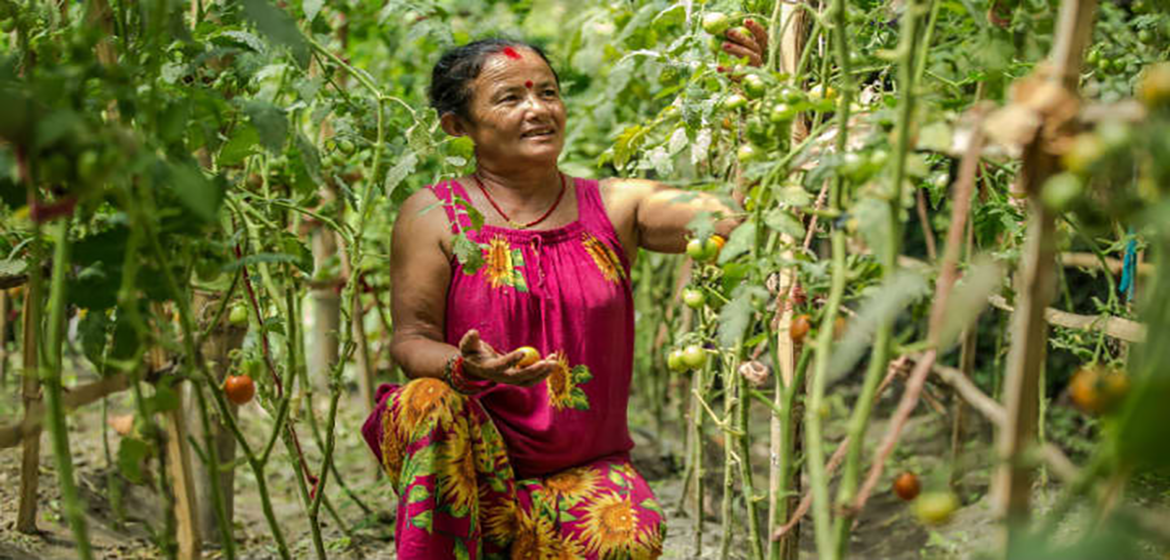By Ginette Azcona, Silke Staab
In 2015, global leaders signed up to the most ambitious development agenda the world has ever seen, agreeing to 17 sustainable development goals. The pledge was to “leave no one behind” in a universal agenda for rich and poor countries alike. As we reach one-fifth of the way towards that 2030 deadline, how can governments make progress on such an ambitious and complex agenda?
A new report from UN Women, , makes clear that one of the answers is to prioritize policies and investments to advance gender equality.
The scope of the is huge: 17 goals, 169 targets, and 232 indicators, and thanks in large part to the efforts of women’s organizations, 54 of the indicators are gender-specific. This means that not only do we have a comprehensive goal on gender equality — SDG 5— which covers ending violence against women, repealing discriminatory laws, and reducing women’s unpaid care work, among other pressing issues; but most of the other goals include targets and indicators that mean we can track whether we are making progress for women and girls.
A new report from UN Women is pessimistic about progress towards the Sustainable Development Goals on women and girls, and points to the need for better data to drive change.
The promise of such a comprehensive agenda is that it enables linkages to be made across different issues. Take ending child marriage (target 5.3), a problem which requires not only changes in discriminatory laws that allow girls to be married under the age of 18 (target 5.1); but also measures to address the poverty that drives families to marry their girls early (target 1.1); increased opportunities for girls to access safe and empowering education (target 4.1); and access to family planning so that teenage girls can avoid early pregnancy that often leads to early marriage (target 5.6). The SDGs recognize that these kinds of problems require an integrated approach.
But the scope of the agenda undoubtedly also creates challenges for governments, especially those in developing countries with limited resources. That’s why identifying policy solutions that can leverage change across a number of different goals is vital to accelerating progress, and here addressing gender equality is key.
In the case of food security, SDG 2 sets out to end hunger and improve nutrition. New data show that in two thirds of countries, women are more likely to report food insecurity, and in some, the gender gaps are large: In Pakistan, for example, women were 11 percentage points more likely than men to say that they struggled with regular access to food. Certain groups of women are especially hard hit: As many as 4 in 10 women belonging to the Sindhi ethnic group, living in the poorest rural households in Pakistan are underweight, for example. This shows how gender inequality intersects with other forms of discrimination on the basis of ethnicity, income level and location.
So, what are the policies that can unlock progress on women’s food security, but also on other goals, for the benefit of all? One answer is to strengthen women’s land rights (target 5.a). Women play a pivotal role in food production, processing and distribution, yet globally, they are just 13 percent of agricultural land holders. Where women have secure access to land, they are more likely to invest to increase productivity and receive support to adopt climate-smart agricultural techniques (target 13.b).
Having control over land would give women greater economic security, with positive benefits for themselves and their families, potentially contributing to lower rates of malnutrition and stunting among children (target 2.2); and, by lowering rates of anemia among women, even to lower rates of maternal mortality (target 3.1). So, by prioritizing land rights for women, we could potentially see progress on five of the SDGs, on hunger, poverty, gender equality, health, and climate action.
So, what’s stopping us? We have an ambitious, universal agenda. We know how to unlock progress by prioritizing gender equality, and we can identify the women and girls who are being left furthest behind. It’s no surprise that two big barriers are money and “politics as usual.” Governments need to be able to finance gender equality policies, and yet, the value of money flowing out of developing countries, including debt payments and illicit flows, is $3.3 trillion per year, 2.5 times the amount of resources flowing in. In comparison, donor spending on gender equality — $40.2 million — is a drop in the ocean. Reducing outflows, increasing tax revenues and ensuring that corporations pay their fair share of tax would provide all the resources and more to make the kind of gender equality investments we need to see.
As for disrupting “politics as usual,” Agenda 2030 includes a set of processes aimed at holding governments to account, including peer reviews and annual global meetings to assess progress. But history teaches us that social change is not gifted from above, but comes through pressure from below. Women and feminist organizations were pivotal in demanding Agenda 2030, and ultimately it will be their organizing and action that will also determine whether its promise is realized.
Source:
Related to SDG 5: Gender equality



